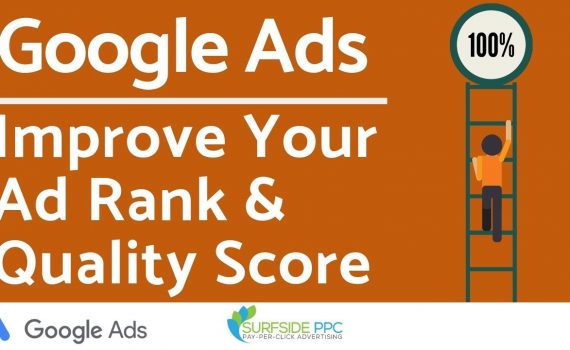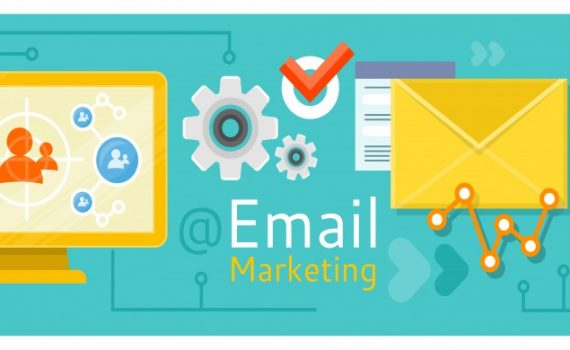
Good ways to improve PPC quality
Category : Google Ads
When working on improving lead quality, it’s almost inevitable that you’ll also lower the number of leads you’re generating. Ideally, the number of quality leads is going up as overall leads declines. This means you’re avoiding the lower quality leads that are easier to come by, and instead are generating higher quality leads.
When working on lead quality, it’s important that you expect a number of things to happen to your KPIs:
- Overall lead volume will decrease
- High-quality lead volume should increase
- Cost per lead usually goes up
- Cost per high-quality lead should go down
- Click-through rate typically goes down
If that sounds like something you can stomach, then we’re all set.
Now that we have our expectations set, let’s get into the nitty gritty.
Here are five strategies I’ve successfully used to improve B2B lead quality that can help any lead generation campaign.
1. Target more specific keywords
All search campaigns start with the keywords. They’re the backbone of the campaign, and they determine who you will get in front of, what ad copy needs to be written, which landing pages you should use, and so on.
When working to improve lead quality, one of the first things you should do is revisit your keywords.
Long tail vs. short tail
How many words make up the majority of your keywords? Typically, the shorter the keyword the less intent you can assign to its associated queries.
If most of your keywords are one or two words long, can you lengthen them by adding a modifier to make them more specific?
The name of the game for lead quality is finding those users who actually know what they want, and long-tail keywords are a better way to target them.
Although it’s a small difference, someone who types in “life insurance policies” is arguably more qualified than someone who types in “insurance policies.” They’ve already clarified what type of insurance policy they’re after, making them more likely to buy.
How can you take your current keyword list and make those keywords more specific? Are there modifiers like the example above that you can add to your keywords to give them higher intent?
Match types
Like keyword length, match types can play a big part in lead quality. Exact and phrase match allow for the most control in keyword matching, so if most of your leads are coming from your broad match terms, this could be causing issues.

To combat poor matches, you’ll need to pick one of two strategies:
- Be more vigilant with search query reviews and negative keyword additions, or
- Limit your use of broader match types.
Neither is perfect. One requires more ongoing optimizations while the other can limit volume more severely. Choose the one that’s right for you, but don’t be afraid to make adjustments over time.
2. Use qualifying copy in ads
We’re always trying to find the most appealing ad copy for our potential customers; always on the lookout for which headline or call to action will get that bump in CTR and potentially increase your conversion rate.
But not when quality is the focus.
When quality is the focus, we want to purposefully deter some users from clicking on our ads. This needs to be done tactfully. Just because someone isn’t in the right place to click and convert now, doesn’t mean they never will be.
Continuing with the life insurance example, if someone searches for “life insurance policies,” we want to show for that query. But let’s say we’re also trying to sign more clients with multiple policies bundled together. Instead of writing copy that speaks only to life insurance, we might write something that calls out the bundle deal.


For those users not interested in bundles, they’ll likely click on another ad on the SERP that speaks only to life insurance. Less qualified click averted!
3. Write landing pages for target customers, not all customers
Now that the user has gotten through your first two filters with keywords and ad copy, what else can we do?
Landing page copy is yet another tool to further qualify the users on the page. I like to use the landing page copy to outline what our ideal customers would be.
Nearly anyone is eligible for life insurance, but likely we’re going to want younger, healthier people. So in the body copy of the page, call out those characteristics as what your product is built for. Use images of young, healthy people living their best lives.

The same type of logic would apply to a B2B SaaS provider. Typically, those companies make more money on larger accounts. Even if your solution works for businesses of all sizes, use copy that specifically calls out “Businesses with 50+ Employees” or whatever your parameters are. You could even write a header that says, “Best suited for companies who…” and then give a series of bullet points outlining your target customer.
You can be as subtle or as bold as you like, but be sure you’re using your landing page to help qualify users.
4. Give your form the attention it deserves
One surefire way to scare off folks who are only window shopping is to ask them for more information. It’s
the highest price anyone can pay to a lead generation company. If you’re noticing a large number of forms filled by lower quality leads, try increasing the amount of information you ask for.
When using Facebook ads for lead gen, we saw an increase in lead quality when increasing the number of form fields from the first to the second forms below.


Now, that’s not to say you should just throw any old question in there. Be sure it makes sense in the context of the form.
One way I like to go about it: What is one additional piece that you or your sales team would love to have already in hand when following up with this lead? Annual revenue? Number of employees? Income level?
In the example above, by adding in questions about industry, job title, and company name, our sales teams were able to better speak to the lead’s individual needs simply by doing a little research before the follow up call. The sales team felt prepared and the lead felt heard. A win-win.
In addition to the number of form fields, it’s also important to pay attention to what exactly you’re asking for in a form.
There’s a big difference in asking for an email address and a work email address, and yet for sake of ease or laziness we leave the field identifier as “Email.” Similar to a slight change in keywords “insurance” to “life insurance,” be sure you’re asking the user to give the exact information you want in your forms.
Read more Tips To Maximize PPC profitability
_______________________________________________________________________________
Please contact us for seo service packages at TDHSEO.COM.
TDHSEO Team
Email: tdhseo@gmail.com
Skype: tdhseo
https://www.facebook.com/tdhseo
Thank you!



